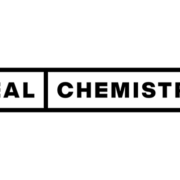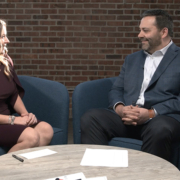Healthcare Agency Roundtable 2023: Artificial intelligence for the foreseeable future
Healthcare Agency Roundtable 2023: Artificial intelligence for the foreseeable future
By Maria Fontanazza • [email protected]
How has the application of artificial intelligence impacted business and working with clients?
Alfred Whitehead, Executive VP, Klick Applied Sciences: We believe that artificial intelligence (AI) is going to have as large of an impact on marketing and promotion as the Web did. That’s why at Klick, we have been experimenting heavily with the newest generation of AI technologies. Our approach to AI is people-centric, encouraging the responsible use of AI to help our employees do the best work of their careers. We’ve conducted close to 100 experiments in the application of AI to our workflows as part of a grass-roots internal AI program. Based on what we’ve learned, we’ve begun embedding AI into a number of our processes. AI is helping us to better plan projects, anticipate risks and problems, and evolve our creative process. We’re also keeping a close eye on the evolving copyright cases, as we sharpen our skills in direct content-generation internally. Finally, we’re looking at the bigger picture impacts of AI and moving to fill the gaps we see downstream in content creation, as we know that AI-driven creators will overload existing processes.
Ryan Slipakoff, Chief Transformation Officer, Klick Health: Generative AI also has tremendous potential for health care within the constraints of our highly regulated industry. We have been helping clients to ready their data, operating models, strategies, regulatory processes, and content supply chains to enable them to take advantage of this wave of new capabilities. This is being done across every aspect of their business–with a particular focus on commercialization, customer support (HCP, payer, patient, HCO) and using the power of AI to unlock formerly impossible opportunities at the intersections of those stakeholders. Given the complexity of healthcare in the U.S., distilling data into insight is not easy, due to fragmentation, regulation, and lack of interoperability. AI alone is not a cure-all, but it does make new things possible from a processing standpoint. To turn that into value requires the context to understand all stakeholders —not only the commercial business, but the operational, logistic, regulatory, and health economic aspects of the business. Combining this omni-healthcare context with AI’s computational capabilities, operational content supply chain, and data rigor that can operate at the speed and volume that AI enables can deliver substantial business impact. Klick’s unique positioning at the intersection of those too-often siloed perspectives on the healthcare business is enabling us to leverage AI to deliver unprecedented impact across the healthcare value chain for clients and the customers they serve.
David Cherry, Executive VP, Managing Partner, Customer Experience, Biolumina: Applied AI has infused every part of our business for years, from omnichannel optimization to generative retouching. It has been exciting to see recent improvements in capabilities in all these areas — automated transcriptions, “smart” fills, and constantly improving video CGI all help us deliver on our creative’s vision for our brands. Among our clients, there’s a new focus on productivity automation and workflow efficiency where AI is a critical component. At Biolumina, we were fortunate to be part of Omnicom’s pioneering beta rollout of Adobe’s Firefly and Getty Images’ GenAI capabilities, and are closely watching and cautiously experimenting with other GenAI tools. When we do experiment, the results are reviewed thoroughly by an internal AI Committee, and we’re insisting on human review of any machine-generated material before deployment — legal and regulatory adherence, including copyright adherence and accuracy, are nonnegotiable in our industry. We see huge potential for productivity gains with future GenAI tools, but as we learned from our integration of Applied AI, the rate limiting factor may be how quickly our human systems, perceptions, and processes can adapt.
Sharlene Jenner, VP Engagement Strategy, AbelsonTaylor Group: At AbelsonTaylor Group, we recognized the transformative potential of AI early. We have been proactively evaluating AI-driven solutions to advance marketing mix optimization with new technologies while leveraging existing digital infrastructures. We’re focused on harmonizing AI capabilities with platforms our clients are already using. This elevates operational efficiencies without undue complexity, ensuring that clients can tap into the vast potential of AI without having to overhaul their current systems or practices.
AbelsonTaylor Group has a dedicated technology innovation team specializing in AI and advanced marketing technology solutions. This team’s primary objective is to identify and implement systems that not only refine and optimize the marketing mix but also increase personalization within audience segments. We are utilizing AI to help unravel complex user behaviors, understand how audiences engage, and allow more precise targeting for clients. Ultimately, we want to capitalize on personalized one-to-one relationships, because incorporating AI is not just about technological advancement, but about harnessing its potential to forge stronger, more insightful connections.
Alex Silverstein, Managing Director, Chief Technology and Innovation Officer, CrowdPharm: AI enables us to ideate and iterate at speeds not previously possible. With AI, we can rapidly test and refine new concepts at the speed of thought. It also helps us to make data-driven decisions and continuously optimize. And this will only improve our competitive advantage over time. As futurist Roy Amara said, “We tend to overestimate the effect of a technology in the short run and underestimate the effect in the long run.”
Jay Patel, Executive VP of Experience Strategy, Saatchi & Saatchi Wellness: The impact of generative AI on the tactical side is currently limited to experimental work or “innovation” asks from clients, although on the creative side we are actively using gen AI for all sorts of tasks. However, deep learning and machine learning aspects of AI have been changing the experience and engagement landscape for over 10 years now, especially when it comes to analysis of data and operational applications in tasks like legal reviews, segmentation, and dynamic experiences based on behaviors.
Jenny Baban, Senior VP, Customer Experience Management, CMI Media Group: AI has created a tremendous opportunity to work more efficiently and effectively, while learning more about our audiences and delivering better customer experiences. For several years, we have already been using machine learning to automate the activation of media and dynamically make next best action campaign decisions which has proven to dramatically improve customer experiences. As AI continues to expand, we are identifying opportunities to further customize the individual experiences within our campaigns, while increasing agility and speed to market for our clients.
Shyam Desai, VP, Digital Activation, CMI Media Group: Machine learning and automation have been adopted by many of our clients’ brands, with strong, positive results to campaign performance. The first hurdle for clients to buy-in was large, but after seeing performance prove out, I have seen clients ready to jump in, as long as the application is considered brand-safe.
Angela Tenuta, President, EVERSANA INTOUCH: The power of AI has transformed how we work at EVERSANA and EVERSANA INTOUCH. We’re not just talking about it, we’re doing it. I’ll give you three examples. First, we’ve been doing it for a long time. In fact, we wrote the industry’s first AI e-book in 2018, well before the chatter about Chat GPT popped up in early 2023. We’ve invested in generative AI technologies for many years. We have a whole platform called Cognitive Core which is powered by AI, and our innovation and data teams use it every day to do really transformative work. We’ve also engaged our employees across the agency to embrace AI. We have an AI Hub for all team members where they can find the latest on innovative technologies and AI-based tools to support their daily work. Everything we do internally has been vetted by our compliance and even outside legal teams, and we’ve found tremendous synergies to allow team members to really focus on what they do best and eliminate a lot of mundane tasks. We also brought this innovative mindset to all EVERSANA. In March of this past year, Faruk Capan presented EVERSANA with an AI Challenge – an employee driven campaign to get people to submit creative ways that AI could solve our internal and external (client) challenges. Over five weeks we had nearly 300 submissions, thousands of votes and two winners chosen by a panel of judges whose ideas are now coming to life! That’s the spirit of innovation and AI.
Julie Pilon, Chief Strategy Officer, IPG Health: The hype around generative AI has quickly led to incredible enthusiasm and transformation of our daily work. AI helps us cast the net much wider than ever before, but beware! Although AI can be a great accelerator, it is not always a “truth” teller. Once we verify the references and weed out obvious and problematic biases, we do see wonderful applications throughout the work we do internally and for our clients. Internally, Gen AI helps us in understanding patient challenges within their disease journey and harmonizing disparate elements like personas and journeys into unified solutions. It guides us to the most valuable insights floating within oceans of noise. It enhances tactical planning by providing creative and strategic springboards for our teams. For our clients, we’re deploying Gen AI chatbots that are poised to tackle a range of topics, from product knowledge to disease support. Our approach widens the scope for discovery and acts as an accelerator where we can explore every conceivable strategic path, leading to consistent creative epiphanies across our portfolio. We believe the utilization of Gen AI is not some future phenomenon; it’s a present reality, reforming our business at this very moment.
Kathleen Nanda, Chief Creative Officer, FCB Health New York, an IPG Health Company: At IPG Health, AI has been embraced throughout our entire organization, from strategy, to medical, to IT, to production and of course, creative. Every discipline is digging into the richness of opportunity. Our clients have been hungry for all things AI related and are regularly requesting we apply it to our workstreams. It’s providing efficiencies, but also so much more. AI can be a powerful boost to our thinking, as well as to what we make and how we make it. Our client/agency collaborations can now be even richer and more streamlined. To get high-impact output, we like to use a variety of tools that complement each other. And while there is tremendous potential, our clients and our teams need to remember that AI is still just a tool. We need powerful and creative human inputs to get the greatest outputs. As our prompts get smarter, and our ability to leverage the best parts of each platform are refined, we will continue to see broader utility across work streams, and better and better results. With the technology moving so quickly, we’re still only scratching the surface of the capabilities and possibilities.
Renée Wills, Co-founder, Brick City Greenhouse: We understand the importance of staying up to date with the latest technology. We’re harnessing the power of generative AI for our agency’s self-promotion efforts, ensuring that we remain at the forefront of technological advancements and gain valuable experience without experimenting on our healthcare marketing clients. By utilizing AI for our internal needs, we aim to master this technology’s potential applications. It’s not just a strategic move; it’s a way to learn and innovate while upholding the quality of our work for our clients. While I don’t see generative AI replacing the creative work that we do any time soon, I do see it as a valuable tool that we’ll all learn to leverage to enhance our work in the future. Personally, I’ve found that using AI to kickstart social media content has been a game-changer, acting as a creative catalyst to help me overcome the initial writer’s block and craft engaging content.
Todd Greene, Senior VP, Omnichannel Marketing, Brick City Greenhouse: AI has been having an impact on business and client work since the mainstream usage of computers, search engines, and even spell check and Microsoft’s Clippy! And although generative AI has triggered a tipping point for this technology, we can’t lose sight of its more “traditional” business uses. Specifically, in our industry, we see clients and partners continuing to experiment and apply the predictive nature of these traditional AI recommendation engines to patient and HCP data. Acquiring data lakes and filtering them for automated communications and next steps is where I see significant impact — whether the content within those next steps is produced by humans, generative AI, or a combination of the two.
Fred Kinch, Founder, Brick City Greenhouse: Currently, AI is good for ideation and first drafts; it can help unclog the creative pipes to get a wide range of initiatives going. But you’d better fact check it. It’s fun but not truly “intelligent” or even all that useful. The output is not ownable and hallucinations, dated information, and inherent biases still plague many of the common AI tools. Also, outside of proprietary AI tools, you can’t input anything that the clients would consider confidential. We have a long way to go on this front.
Steve Hamburg, Managing Partner, Chief Strategy Officer, Calcium+Company: Artificial intelligence, which has been around for years now, generated a hot new flash of excitement — as well as a tidal wave of commentary — with the arrival of ChatGPT last year. That platform performed seemingly magical feats of knowledge and articulation, and it was shockingly easy to use. Same with Midjourney in the graphics world — learning how to “prompt” unleashed a torrent of slick AI images. Suddenly, any agency could claim to have harnessed the boundless potential of AI. Once past the fad stage, AI revealed itself to be a powerful and promising tool for agencies, yet one that needed to be explored carefully and adopted purposefully. In certain areas — data analytics, market intelligence, creative development, and engagement planning — AI clearly has limitless potential and enormous relevance to agencies and their clients. Yet the dramatic and immediate AI transformation that was predicted to occur instead became something more gradual and considered, which is a good thing.
Those AI generated images, so shiny and wondrous at first, now have become a cliché. And, given their usage limitations, they can’t be represented as agency creations nor used by clients. Likewise, the impressively smart and verbally dexterous output of ChatGPT and its ilk are not necessarily authoritative, and they can’t be approved or used in client communications. We’ve had a glimpse into the magical AI future. Yet, for agencies and their clients, the future is mostly being arrived at in thoughtful steps rather than one big leap.
Katya Petrova, Chief Business Officer, JUICE Pharma: One of the most significant impacts of AI on marketing agencies is the ability to deliver more targeted and personalized messaging to patients and healthcare professionals. By leveraging predictive analytics, we can anticipate market trends and consumer needs, allowing our clients to stay ahead of the curve. AI-powered segmentation tools can help agencies to identify and group patients based on their individual needs and characteristics. In usability testing, generative AI facilitates rapid prototyping and feedback, streamlining the product development process. This allows agencies to create more relevant and effective marketing campaigns. From the tactical perspective, AI-powered chatbots can be used to answer customer questions, provide support, and schedule appointments. This can help agencies to improve programs related to customer experience.
Bryan Roman, Executive VP, Creative Technology, GSW/Syneos Health: GenAI has been a fantastic tool to help get things done in a better way. From a practical, day-to-day perspective, we are using GenAI in all areas of research, strategy, and art creation. For our power users, which is growing by the hour it seems, it’s become an essential tool for discovery and idea generation. GenAI has also opened up many avenues of conversation with our brand clients. There is a desire to see how far we can push things —the “what’s next” vibe is quite strong. So, in addition to GSW/Syneos Health simply using these tools to make better work, we are deep in the weeds in crafting custom applications that will not only enhance our business intelligence but provide clients with novel approaches to HCP and patient communication. The thing that is exciting for me is the pace at which this is all happening. There will be countless opportunities to be “first to market” with a new concept, tactic, etc. For folks in the creative field, it allows for a rediscovery of the creative process, and for our clients it opens up fascinating new ways to communicate with HCPs and patients.
Michael Austin, Chief Experience Officer, ConcentricLife: Separating the shiny from the real while finding new ways to show up for the brands and clients we work for is always important. Strategies and opinion pieces around the use of Nonfungible Tokens have proven to be mostly fungible, interchangeable with countless other of-the-moment-shiny-tech red herrings. Rather than pontificate on all the possible ways AI will upend the agency model in the near term, let us look at how we are actively using AI today. Elbert Hubbard, the 19th-century artist and philosopher, frames our agency use of AI today: “One machine can do the work of fifty ordinary men. No machine can do the work of one extraordinary man.” AI gives us extra eyes and hands as an extension of our teams who are always pushing thinking, allowing all of us to learn, imagine, and execute in more than one place and more than one way at a time. Our development team uses AI to improve code quality, efficiency, and quickly learn and adopt new languages, syntax, and frameworks. Our social media and human behavior teams use AI tools to do social listening and digital ethnographies, creating richer understandings not of “customers” but of the “people” we seek connection with. Our Cceative team uses generative AI to effectively add visuals to the stories we intend to tell, to manifest proof of concepts and add dimension to our imagined ideas.
Time is really the ultimate commodity. Time to dream bravely. Time to execute flawlessly. Time to find the time. AI is helping us create time and space. The new tool is used to forge ideal connections between the brand experience and the customer experience. We use every tool at our disposal, AI included, to do that. AI may be exceptional in its capacity, but it is after all, a means to an end experience.
 Nick Spuhler, Senior VP, Activation and Engagement Strategy, Fingerpaint: The broad accessibility of generative AI has fundamentally changed how we collaborate with clients because everyone can now author at the speed of thought. We can take any idea — whether it’s big or small, brilliant or dumb — and bring it to life as a high-fidelity prototype in several modalities almost instantly. And that’s just the first draft! From there, we refine and strengthen our most promising thinking, just like we’ve always done, but we can now iterate on ideas in real time with clients, building the next versions together. This dynamism has strengthened our partnerships because doing the work becomes at once more inspiring and more efficient. It’s suddenly faster to give an imaginative thought color and shape than it is to try and explain it. Even better: We’ve become more ambitious in the ideas we pursue because AI has removed the risk of developing them.
Nick Spuhler, Senior VP, Activation and Engagement Strategy, Fingerpaint: The broad accessibility of generative AI has fundamentally changed how we collaborate with clients because everyone can now author at the speed of thought. We can take any idea — whether it’s big or small, brilliant or dumb — and bring it to life as a high-fidelity prototype in several modalities almost instantly. And that’s just the first draft! From there, we refine and strengthen our most promising thinking, just like we’ve always done, but we can now iterate on ideas in real time with clients, building the next versions together. This dynamism has strengthened our partnerships because doing the work becomes at once more inspiring and more efficient. It’s suddenly faster to give an imaginative thought color and shape than it is to try and explain it. Even better: We’ve become more ambitious in the ideas we pursue because AI has removed the risk of developing them.
Chris Rudnick, Senior VP, Executive Creative Director\Head of Content Creation + Delivery, and Arek Zarycki, VP, Director of Creative Technology, TBWA\WorldHealth: The power of artificial intelligence is visible across the business landscape and transforms how creative agencies interact with their clients. One of the most notable applications has been around the automation of time-consuming manual tasks. With the power of AI to quickly consume and process large amounts of data, we can speed up internal processes and extract valuable insight from in-market materials in near-real time. This not only frees up employees to focus on more strategic and creative tasks but also ensures that routine operations are carried out consistently ensuring flawless
execution. AI helps expedite iterative tasks, which helps us in everything from concepting to the development phase. It has proven to be a useful tool for creatives to explore ideas they never thought imaginable. This ability allows us to stay responsive and competitive in today’s rapidly evolving market. Integrating AI technologies into our everyday processes keeps us and our clients at the forefront of innovation, as we harness the power of data-driven insights to anticipate audience preferences and adapt the strategies accordingly.
Jay Appel, Chief Digital and Growth Officer, The Bloc: It’s still early days with enterprise AI solutions, but it’s potential impact (both positive and negative) is something we talk about both internally and externally on almost a daily basis. Without giving away all the details, we have gone through a process to identify AI applications to drive productivity and efficiency of very manual processes in the agency across all functions from the more obvious in strategy, medical, and creative to the foundation of most organizations in operations, finance and talent identification and retention. In order to develop credible products for our clients and their customers, we have to demonstrate impact, and often as we are asked to develop ideas no one has done before, the next logical question is “how do you know it will work?” We now have a process to demonstrate success by “drinking our own Kool-
Aid” before we put anything into the market. The convergence of AI with pharma marketing can lead to more efficient campaigns, better customer relations, and a deeper understanding of market trends and behaviors. As relates to AI in the biopharma industry, what has me most excited is personalization and targeting, content creation, predictive analytics, chatbots and virtual assistants, and enhanced visual recognition. The integration of AI into the pharmaceutical industry holds great promise, but there are also some areas to cautious about, including data privacy and security, bias and inaccuracy, regulatory challenges, transparency, and over-reliance on AI. Addressing these concerns requires multi-discipline collaboration to ensure that AI is used responsibly and effectively in pharma. (Read more of Appel’s insights in “Applying AI in biopharma in impactful ways“).
Alex Sommer, VP, Account Director, Greater Than One: Our clients have shown significant interest in the space, especially new generative AI technologies such as ChatGPT for copy and Midjourney/DALL-E for images. Many are seeking to understand the opportunities and risks of integrating this new technology into their workstreams, and into the development of promotional materials. There’s general consensus that due to pharma regulations, HIPAA compliance, and the fact that pharmaceuticals directly impact the health of patients, generative AI is not at a point where it can fully replace current drug and promotional development processes. There are many opportunities though for the use of generative AI with significant human oversight, including generating initial creative concepts, developing and optimizing copy, and streamlining research by educating large language models (similar to ChatGPT) on large data sets of physician or patient interviews. From the ad agency side, ChatGPT especially can be a great resource for confirming process, getting a second opinion, or facilitating client communications. AI in general (though not necessarily generative models) has also found application in analyzing large data sets. This can help identify trends in doctor or patient behavior, expedite diagnosis (or exclusion) of rare or difficult-to-identify diseases, or help predict the efficacy of a new drug based on its molecular structure. As with any new technology in the pharma space, such as social media in the last decade, a crawl, walk, run approach will likely be taken over time as the technology both improves, and as users become more comfortable with what the technology can and can’t be relied on to deliver.
Brian Peterson, Chief Digital Officer, Greater Than One: There’s no doubt that AI, and specifically generative AI (GAI), is having a profound impact on our healthcare marketing clients. Across our portfolio we’re working closely with our clients who are eager to learn more about GAI technology, its capabilities and implementing strategies to effectively integrate GAI it into their business models. Many of our clients are experimenting with GAI technology for internal purposes in creating presentation materials and automating routine tasks. We’re also seeing broader, more impactful ways to improve the overall customer interaction experience through sales reps of patient assistant programs by applying GAI tools into those CRM and support platforms that help recognize opportunities as well and utilize client interaction data sets to provide more personalized responses by the sales and support teams. As an agency, we’re engaging our content, media and analytics/insights practices to explore content development applications, improve the effectiveness of targeted media placements, analyze large volumes of data, developing advanced segmentation logic and audience quality scoring models and have been working on building predictive models with numerous applications.
Gary Lyons, Head of Commercial Excellence and Strategy, Medical, Avalere Health: AI has the potential to automate searching and compilation tasks, reduce insights- and content-generation time, and help with strategic tasks and analyses. However, the potential benefits of these approaches come with safety and governance caveats because of concerns with data security, ongoing quality checks, and integration into existing ways of working. At Avalere Health, we have established the Generative AI (GenAI) Council to stay ahead of this rapidly evolving space. The council, led by Geoff Thorne, Chief Technology Officer, has drafted guidelines and considerations around the use of GenAI to ensure we remain at the forefront of innovation while also maintaining the integrity of our clients’ data and ensuring all findings are validated and accurate. It is important to recognize that AI is best used as part of a technological ecosystem and leveraged in combination with additional insights and strategic expertise.
AI-based tools are largely still in their infancy within the pharmaceutical sector — especially in medical affairs. However, a number of usage cases are emerging — predominantly, the application of natural language processing tools (NLP) and the application of large language model (LLM) GenAI tools. There are a variety of ways these tools can be leveraged in medical affairs, including optimizing how we conduct literature analyses to effect and compile rapid searches and aggregating datasets for onward strategic analysis. AI chatbots and virtual assistants can also be used to personalize patient engagement, education, and treatment decision-making to drive a better patient experience. AI-driven sentiment analysis can help to gauge public sentiment on social media channels. Other areas of growing interest in the use of GenAI in our field include supporting the quality and consistency of medical content generation; assisting omnichannel customer profiling and segmentation; creating insights from wide and disparate sources of information; adapting medical content to different audiences/formats; and producing image generation for multiple content and channel uses.
Healthcare Agency Roundtable 2023: Pressing issues in the election year (Part I)
Healthcare Agency Roundtable 2023: Representation in healthcare marketing (Part II)
Healthcare Agency Roundtable 2023: Cutting through the social noise (Part IV)
Healthcare Agency Roundtable 2023: A look ahead in market access (Part V)
Healthcare Agency Roundtable 2023: Moving into 2024 (Part VI)
| Maria Fontanazza is the director of content, Med Ad News and PharmaLive.com. |

























